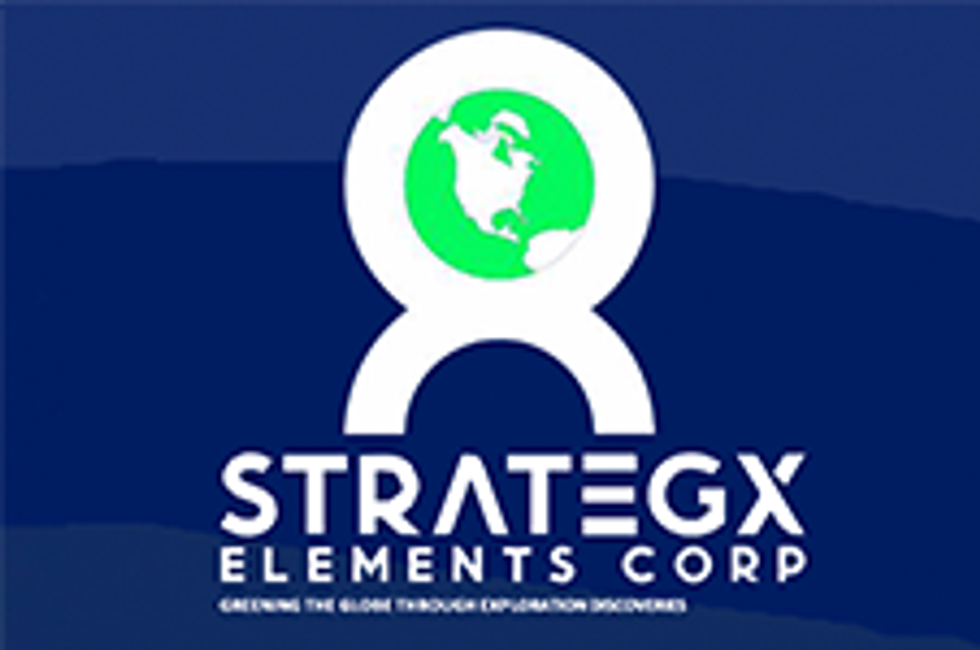VIDEO - Don’t Make These Mistakes When Investing in Battery Metals
The battery metals sector is hot right now, says Rob Fuhrman of Katusa Research. Investors should avoid these mistakes when jumping in.
Battery metals are one of the fastest-growing sectors right now, and in this interview Rob Fuhrman, senior investment analyst at Katusa Research, details what investors can expect from this space in the short and long term.
“There’s a lot of activity, there’s a lot of deals, and that means there’s a lot of opportunity for [investors] to make money,” he told the Investing News Network (INN) at the recent International Mining Investment Conference in Vancouver. Battery metals include popular metals like lithium and cobalt.
“We’re extremely bullish … there’s no debate in our office at least that the electric vehicle is going to be the vehicle moving forward into 2030, 2040,” he continued. “We expect 60 million plus vehicles sold annually by 2040.”
Fuhrman discussed how in the lithium sector, four producers essentially account for 80 percent of the world’s supply and what that means for the price of lithium, stating, “there’s a fight going on between the juniors, they’re trying to gain market share and the producers are trying to keep it. What we’ve seen is the price has gone up significantly over the last couple of years because it’s a small market.”
He also touched on cobalt, noting, “it’s an interesting concept because it’s a great metal from an energy density point. The chemistry is fantastic. The problem is there’s not enough supply.” That’s okay to an extent, he said — however, at some point “you need to scale.”
Investor interest in both lithium and cobalt remains high, and Fuhrman ended by sharing his thoughts on how to avoid making mistakes when entering the market. “We talk a lot about don’t chase, invest with the right management team, be patient, be an alligator and invest smart for the long haul,” he explained.
Watch the video above for more insight from Fuhrman on lithium and cobalt. You can also read the transcript below.
INN: We’re here at day one of the International Mining Investment Conference. How are you finding the event so far?
RF: I think it’s great. Jay and the Cambridge guys always do a great job. We’re big supporters of the event, we’ve participated in all of the conferences. Great lineup of companies, they’ve done a great job.
INN: Today you gave a presentation about green energy and battery metals. Can you let our audience know why you’re interested in these markets?
RF: Sure. It’s probably the fastest-growing sector right now, especially in the metals markets. There’s a lot of activity, there’s a lot of deals, and that means there’s a lot of opportunity for us to make money. I work for Marin Katusa at Katusa Research. We manage a large $200-million fund that’s focused entirely on the commodities sector, so we’re very well versed in the current activities. We pay attention to a lot of things that are going on. It’s very interesting.
INN: What is your forecast for the electric car sector in particular? What are you seeing in that?
RF: We’re extremely bullish over — I mean, you have to take this with a grain of salt. You want to look at the electric vehicle sector over a 20- or 30-year time horizon. Just because Tesla (NASDAQ:TSLA) misses their quarterly production numbers [it] isn’t the end of the world. But there’s no debate in our office at least that the electric vehicle is going to be the vehicle moving forward into 2030, 2040. We expect 60 million plus vehicles sold annually by 2040.
INN: Speaking specifically about battery metals and talking about lithium, there are a lot of things happening in the market. We had a very interesting quarter one. What are some other factors that investors should keep an eye on for the rest of the year?
RF: There’s been a lot of money that’s been invested in the lithium sector over the last couple of years, at both the major level and that the junior level. In the lithium sector you’ve got four producers that essentially produce 80 percent of the world’s supply, and they’re not going to relinquish that anytime soon. There’s a fight going on between the juniors, they’re trying to gain market share and the producers are trying to keep it.
What we’ve seen is the price has gone up significantly over the last couple of years because it’s a small market. Right now there’s 220,000 metric tons of lithium sold every year — that’s a very small market. In comparison, the copper market is 25 million metric tons. So you’re talking about a much smaller scale right now, but it’s poised to grow and so that’s where the opportunity is.
Moving forward for the rest of the quarter, or for the rest of the year, you’re probably going to see more of the same. I think there’s going to be a lot of noise, but what you’re going to see moving forward are a lot of the companies that have a feasibility report are going to be moving to that next stage or they’re going to be acquired. These producers, these four senior producers, want to keep their market share and the best way to do that is by acquiring a junior producer or junior development-stage company.
INN: Jumping to another battery metal, cobalt, we heard Tesla talk about reducing cobalt in their batteries. How do you think this will impact the market and is the party over for cobalt?
RF: I touched on that in my talk today and … it’s an interesting concept because it’s a great metal from an energy density point. The chemistry is fantastic. The problem is there’s not enough supply, and that’s okay to an extent, but if you’re trying to change the world like Tesla and Volvo (STO:VOLV) and all these large car producers are trying to do, and move to electric vehicles, you need scale. The issue has been and will continue to be for cobalt is, “is there enough scale?”
Most of the production is in the DRC, so that’s an issue and so companies are forced to look elsewhere. I don’t think the party is necessarily over, but there’s definitely going to be a shift in mentality away from the chemistry that’s being used. Now they’re going to be using more nickel, less cobalt within the battery itself, which means more demand for nickel, less demand for cobalt moving forward. So that changes our forecasts. Still very bullish, but as a junior I think it’ll be much harder. I think right now if you don’t have a resource estimate it’s going to be very hard to put that project into production, which means you’re not going to be able to capitalize on these extremely high prices in the cobalt market today.
INN: So where is the place to be in the battery metals sector?
RF: We really like copper. Dr. Copper is a great bellwether for global economics as a whole, and it’s extremely exposed to green energy and to the electric vehicle movement. There’s thousands of pounds that are being used every day in wind turbines, solar panels as well as electric vehicles. You get a double-whammy investment effect there. We project that by 2040 there will be 6 million tonnes of copper demand coming from the green energy and electric vehicle sector, so that’s like 20, 25 percent of current production. That’s enormous considering the world’s largest mine produces just shy of 1 million metric tons annually. So we’re going to need six more of those to make up for that demand. That’s a lot, and that’s not easy to do because … there haven’t been many copper discoveries in the last few years.
INN: You’ve touched on copper and you’ve touched on nickel before as well. What about other metals such as vanadium?
RF: Vanadium is an interesting one. It doesn’t really have an application in the electric vehicle sense. The focus on vanadium, as well as zinc, is more at the commercial utility storage level, and that is still a very to-be-determined market right now. There’s no clear winner. The big issue with vanadium is there’s even less supply of that than there is of cobalt, and so that makes scaling at a world level very difficult. Not to say it can’t happen, but it’s still very early days. Utilities storage though is probably the next large egg that needs to be cracked in the sector, and we don’t quite know who the winner is going to be yet.
INN: As an experienced investor, what is the one mistake investors new to the sector should avoid making?
RF: Definitely don’t chase a hot sector. Right now obviously the battery metals sector is extremely hot. You don’t want to be chasing at these levels. You don’t want to be putting your money into fliers that you haven’t done correct research in, and so that’s what we talk to our retail audience [about] a lot at our website. We talk a lot about don’t chase, invest with the right management team, be patient, be an alligator and invest smart for the long haul.
INN: When choosing companies in the battery metals sector what do you do for?
RF: We look for world-class management teams to start with. You’re looking for somebody that’s probably done this before. A great example is in the lithium sector. Marin Katusa was investing in lithium 10 years ago, well before the electric vehicle sector was around. So this time we made sure that we invested with that same group again and have done well. You want to always invest in a management team that’s done well, [is] well capitalized and that is a forward-thinking company that’s not just jumping into the space because it’s hot. That’s another big pitfall. Companies — we call them rounders, because they jump from lithium to cobalt and then to uranium and then back because it’s whatever is sexy and hot. That’s not the way to invest as a long-term investor.
Don’t forget to follow us @INN_Resource for real-time updates!
Securities Disclosure: I, Nicole Rashotte, hold no direct investment interest in any company mentioned in this article.
Editorial Disclosure: The Investing News Network does not guarantee the accuracy or thoroughness of the information reported in contributed article. The opinions expressed in these interviews do not reflect the opinions of the Investing News Network and do not constitute investment advice. All readers are encouraged to perform their own due diligence.




